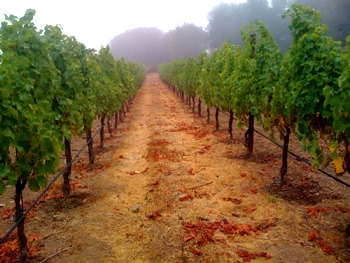2009 La Severitè di Bruto Farina Vineyard

LSB is our most conventional wine, if one asks solely about means of production, technique. Most of the juice is whole cluster pressed; some is crushed to press, none is affected by maceration or skin fermentation. The fruit itself is Sauvignon Blanc, a kind of vanilla ice-cream among grape cultivars. The wine ferments in neutral oak barrels of standard size; sometimes up to half of it ferments and ages in stainless steel barrels; but that is hardly unconventional. SO2 is used liberally but not wildly to suppress malo-lactic fermentation and preserve freshness. The wine is bottled after a year, while it is still fresh, not oxidized at all nor affected by post-fermentation microbes.
Yet the wine is extreme, and in some ways, unrecognizable—at least as California Sauvignon Blanc. It is limpid in the clarity of its flavors; direct, no wires crossing, no contradictory elements. It resembles Grüner more than it does Sancerre; but Sancerre more than it does most Napa whites. The vineyard is the source of all of this: it is a cool, east-facing, and terribly well drained site. Fruit ripens richly without ever becoming tired or flabby. Acidity is remarkable—LSB is almost always our highest acid wine, even if its potential alcohol is more than 2 points higher than other wines'. The wine is all straight lines and forward motion. A vector of speed guided by acidity.
195 cases produced.